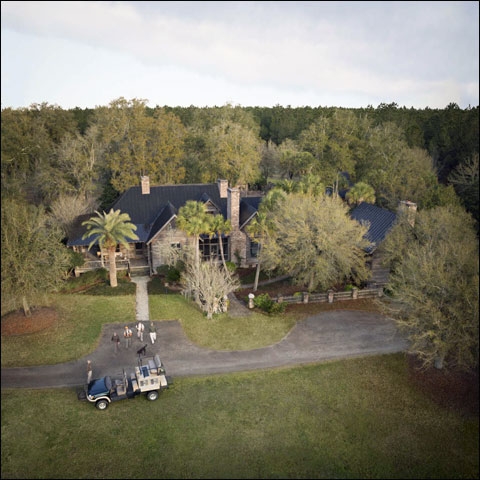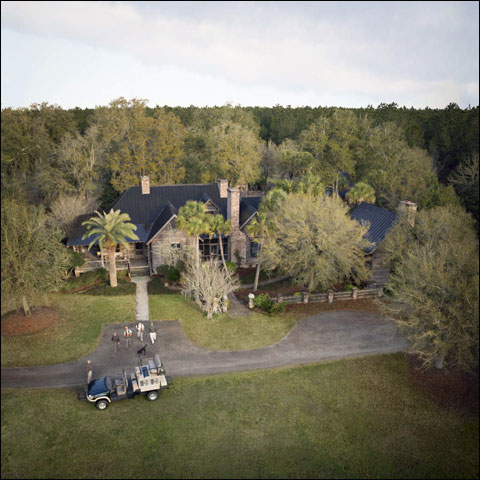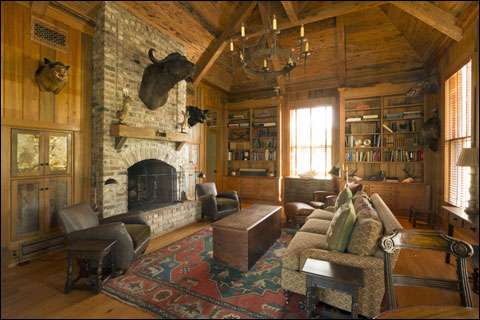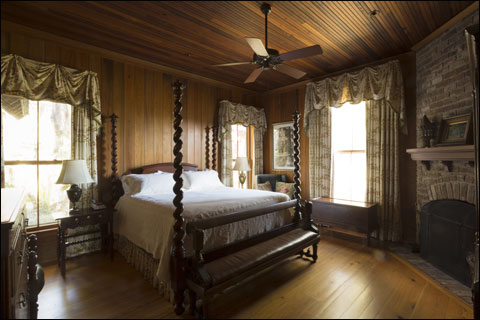Countdown to Bird Opener at Sea Island

Upland wingshooters know the drill by heart as the calendar counts down to opening day: examine the hunting grounds, shoot sporting clays and tend to the dogs and shotguns.
At the luxury Sea Island resort on the Georgia coast, five-star amenities make the legwork more comfortable, but ultimately basics prevail.
 View from the author’s room at the Sea Island resort.
View from the author’s room at the Sea Island resort.
We ventured an advance trip to the Sea Island Shooting School and sister Broadfield Sporting Club and Lodge in anticipation of the quail, dove and pheasant season inauguration there.
For shotgunners, Sea Island’s low-country sporting life echoes through the ages. The resort opened in 1928 with the ribbon cutting of the sumptuous Cloister Hotel. In 1929, the Shooting School started and eventually came under management of the legendary Fred Missildine — a holder of 38 world skeet titles and former exhibition clays shooter for Winchester. The current Shooting School building dates from 1936 and was modeled after a ship’s wheel house. The Shooting School offers 5-stand and trap plus sporting clays on adjacent Rainbow Island.
 In this undated photo from the Sea Island archives, the legendary Fred Missildine is in the dark jacket, with the original Shooting School building in the background.
In this undated photo from the Sea Island archives, the legendary Fred Missildine is in the dark jacket, with the original Shooting School building in the background.
Sea Island’s 5-stand and 10-station sporting clays course experience remarkable tidal fluctuations from the Atlantic Ocean and its salt-water capillaries interlacing the barrier islands. Sea Island is located in Glynn County — noted for encompassing more salt water marshes than another place on the East Coast. The vast marshes can flood right up the edge of the quaint 5-stand or inundate the sporting clays course sufficiently to cast a hook for redfish — making steel shot and biodegradable targets mandatory. On Rainbow Island, abundant Live Oaks draped in Spanish Moss and understory tangles conjure bygone tales that whisper Southern Gothic.
Sagas of the South continue 30 miles northwest of Sea Island, where former Sea Island CEO Bill Jones III built his cracker-style residential compound, now the Broadfield Sporting Club and Lodge. Originally his home, it’s become available to sportsmen and their guests on 5,800 acres of hardwoods and softwoods that had occupied one of America’s earliest hunt clubs.
Today, Southern cracker architecture is in revival under the movement labeled “Cracker Chic” as designers and metropolitans replenish authentic sensibilities in their communities.
 Aerial view of the main house at the Broadfield Sporting Club and Lodge.
Aerial view of the main house at the Broadfield Sporting Club and Lodge.
Historically, cracker houses are simple by virtue of necessity. Early settlers of the South required shelter of quick construction from available materials, while providing relief from oppressive heat. The rudiments of a cracker house include a compact footprint, raised floors (no foundation), ample porches, metal roofs and “dog run” style central hallway. Executed Sea Island style, the Broadfield Sporting Club and Lodge is Mr. Jones’ 21st century vision of cracker style luxury carved out of the 50,000-acre hunting retreat once owned by his grandfather and father.
A big breakfast is always an upland tradition. The Georgian Room in the Cloister Hotel serves up the first meal of the day in a time-honored ambiance of florals, crystal chandeliers, marble fireplace and arches reminiscent of the Roman aqueducts. Straightaway, my scrambled eggs tasted especially rich and I was to discover later they came directly from the hen house full of Rhode Island Reds on the Broadfield Sporting Club and Lodge. If your timing is right, you’ll indulge in the remarkable sausage, ham and bacon cured in Broadfield’s smoke house. Don’t miss this pork extravaganza.
 Jon Kent, Director of Outdoor Pursuits, in the historic building of the Sea Island Shooting School.
Jon Kent, Director of Outdoor Pursuits, in the historic building of the Sea Island Shooting School.
The Sea Island Shooting School was reached via a quick golf-cart ride from the Cloister Hotel. As with other resort shotgunning facilities, the Shooting School throws birds intended to satisfy a wide range of abilities, explained Jon Kent, Sea Island’s Director of Outdoor Pursuits. A former FITASC competitor, the philosophy of the Sea Island Shooting School is more egalitarian than the grueling international arena of his past. “We make sure our guests are safe, break targets and have fun.” He believed the Sea Island Shooting School “has introduced more shooters to clays than any other school in the country.”
Left your shotgun at home? The school makes Berettas available for rental in a full complement of break opens and semi-autos.
Personally, I always find value in clays presentations at resorts where beginners comprise about 30 percent of their customers. For me, these targets provide an opportunity to check the fundamentals of mount, movement and focus. You can shoot in slow motion, feel your body interact with the shotgun, assess foot placement, check shoulder and cheek points, evaluate coordination between both hands, ascertain eye placement and work on the consistency of your pre-shot routine. It’s a purging of the insidious bad habits that creep into your game.
 Instructor Jimmy Duncan on a 5-stand station at the Sea Island Shooting School.
Instructor Jimmy Duncan on a 5-stand station at the Sea Island Shooting School.
I was accompanied by NSCA Level I instructor, Jimmy Duncan. At the 5-stand, Mr. Duncan explained “we’re strong believers in sound fundamentals and focus on the target.”
The Sea Island Shooting School 5-stand has seven machines that throw a variety of crossers, teals, a rabbit and outgoing quartering birds. In prepping for upland hunting, Mr. Duncan cautions against the three most common mistakes he sees:
- People not focusing hard enough on the target (easy to do in the excitement of wingshooting).
- Trying to be way too precise — checking the barrel during the shot (not allowing your natural pointing instincts to their job when a bird flushes).
- People preoccupied with things other than target focus such as mount, foot placement and swing — generally over-thinking the shot (and allowing the birds to get away).
Now it was time for a sporting clays tune-up. Fiddler crabs scurried across the sandy track along Rainbow Island. Except for outgoers, most of the targets were slow but cultivated overgrowth around the stations allocated small windows for breaking them. The sporting clays course was a great refresher in matching target and gun speed with a relatively fast break point. Many shooters tend to jump out in front of slow birds — or start their gun swing on the call instead of visually establishing the target. Do that here and the burst of forward allowance will defeat any possibility of recovering the target.
As we rolled up to Station 8 situated on Black Banks Creek, Mr. Duncan related the story of coaching some guests when, through the trees, they saw dolphins driving fish onto the creek’s shoreline. The dolphins wriggled up on land and ate their hapless prey — mesmerizing the shooting party.
 Caleb Smith, chef de cuisine at the Broadfield Sporting Club and Lodge.
Caleb Smith, chef de cuisine at the Broadfield Sporting Club and Lodge.
After a delicious lunch at the River Bar in the Cloister Hotel, we drove to the Broadfield Sporting Club and Lodge. Where the pavement ends and the dirt road begins you’ll find Broadfield. The substantial gate slid open and a moment later Lee Barber, Broadfield Manager, arrived in big Ford Excursion sporting off-road tires.
We motored along a trail as Mr. Barber talked about the early release of quail and pheasants among the thick woods still bearing a few open plots from logging. The ground is moist, even saturated in places, suggesting waterproof boots. Shooting through the trees would demand steady reflexes for a quick shot. Opt for short barrels and open chokes.
 Dog trainer extraordinaire Chuck Dean has readied the bird buggy for opening day at Broadfield.
Dog trainer extraordinaire Chuck Dean has readied the bird buggy for opening day at Broadfield.
The habitat also nurtures residual pen-raised birds — the survivors reverting to wild. The birds are fed year-round. He oversees a two-year control burn rotation. Predation is tightly managed. Although Broadfield members can also hunt white tails, turkeys and pigs, Sea Island guests have access to the birds. We pass the tower for continental shoots. Two months after quail and pheasant season open on October 1st, Broadfield hosts dove hunts. There’s a lake stocked with catfish, a 5-stand and elsewhere pistol and rifle ranges.
Mr. Barber can be quick to tell you that he loves his job. Relations between the Barber and Jones families reach back three generations in these parts. They are the kind of men you want to guide your hunts and manage the land.
 The living room in the main house of the Broadfield Sporting Club and Lodge.
The living room in the main house of the Broadfield Sporting Club and Lodge.We arrive at the main house. First impression is that you stumbled onto a deeply rooted hunting lodge of lost souls. It’s an amazing illusion of forgotten time. Mr. Barber explains that the siding is reclaimed wood from century-old mills and churches. The gnarled porch posts were hand cut by himself and Mr. Jones — the stumps of branches a rustic detail evocative of swamp timbers. The bricks on the steps, chimneys, paths and patios are dated from old Savannah. The steep pitch of the metal roofs casts the impression that the main house, embraced by lush vegetation, retained the original, compact, cracker house dimensions when in fact the individual sections sleep a total of eight. In reality, though, the building is 13 years old.
Inside, pecky cypress walls and ceilings envelop you in amber light. The wood is pitted with cavities that express the primitive throughout. Turn-of-the-century furniture and recreations figure into the mystery.
 The master bedroom in the main house of the Broadfield Sporting Club and Lodge.
The master bedroom in the main house of the Broadfield Sporting Club and Lodge.
Stroll the compound and you’ll discover two other guest houses, swimming pool, outdoor skinning shed, smoke house and a huge organic food plot that serves Sea Island’s seven restaurants as well as Broadfield. We meet Caleb Smith, chef de cuisine at Broadfield, who looks more like a young moonshiner than a world-class chef. He takes us to the smoke house and upon opening the heavy door racks of curing hams, golden and caramelized, reveal themselves in the aromatic haze.
Then, in the rustic country kitchen, we sample the phenomenal smoked sausage flecked with his garden hot peppers, home-grown crisp pickled okra, the house bread-and-butter pickles, Chef’s sweet yellow relish and indigenous Broadfield honey. I consider the possibility of Chef Smith marinating and smoking my pheasant, quail and dove breasts after the hunt — maybe wrapped in his thick-cut smoked bacon. Man, it’s nearly time.
Irwin Greenstein is the Publisher of Shotgun Life. You can reach him at contact@shotgunlife.com.
Useful resources:
The Sea Island web site
Broadfield Sporting Club and Lodge

Irwin Greenstein is Publisher of Shotgun Life. Please send your comments to letters@shotgunlife.com.


Comments